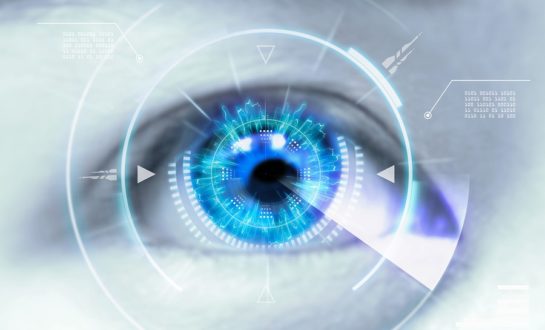

The Difference in Influence is Eye Opening
Table of Contents
When you are first starting out as a presenter, either as a full-time profession, part of your business or as a guest speaker, the feeling of embarrassment can be colossal. You think if you just say what you need to say as fast as possible and look at your shoes, your information will be so incredible, they’ll all love you and you will be a success.
Um…no.
Don’t worry, we’ve all been there. Presenting on stage, even to only a handful of people can be daunting and the only way through it is practice, practice, practice. The way to make your presentation successful, even if it doesn’t feel so good at the time is to be fully present, be courageous, connect with your audience and make eye contact!
“What! No! How do I make eye contact with so many people at once while delivering what I need to say perfectly?”
Slow down. Take deep breaths and gently let your eyes rest on everyone in the room. It will take time so slow is the answer.
Why do I need to make eye contact?
Eye contact makes a connection and lets that person know that you care about them. You are here to talk to them. They are important and looked after with you. You being interested in them will, in turn, assist them in being interested in you. They want to know what it is you have to offer them personally, eye contact lets them know you are honest (shifty people avoid eye contact as well!)
How do I make my eye contact evenly across the room?
The great news here is, you don’t need to. When you have a little chat, one on one with someone in the audience, having eye contact and ensuring they feel safe, a tangible connection forms. As they start to open up and share back with you, the whole room feels the benefit, they all feel that connection too and the whole room relaxes and feels good. The key here is not to get too specific if you are chatting about things off the topic of your presentation or for too long. People get restless. It’s also very important that everyone can hear both sides of the conversation. If things get emotional, use an icebreaker, change the mood and get a laugh. It’s called collective consciousness and it is especially strong if people have gathered for the same reasons to experience the same things and there was a good amount of interaction and mingling going on before you started.
How do I make eye contact so it looks natural?
When you are starting out on stage nothing will feel very natural. Presenting to big groups is not something many of us get a lot of practice doing in our developing years so it will challenge your senses a bit. A really great way to get a steady eye contact pattern going is to share sentences with a person. When you get to the start of a new sentence, make eye contact with someone new, share the words with them and feel their positive impact. Everything you offer on your stage should be a gift. This way you are wrapping each part of your gift individually and handing it over with a personal touch. Now, wouldn’t you like to be treated that way? Treat others the way you want to be treated is the ultimate way to be natural on stage (you can practice this even when you’re not presenting!)
I hate when people single me out, what if they hate it too?
That’s okay, you’ll have moved off to the next person before they have time to get uncomfortable, and of course, because you are using your sensory acuity skills from Excellence Now you’ll immediately know when someone starts to get squeamish.
What if they are not uncomfortable?
Stay with them. These are your key connectors, they are the ones who are super engaged, they will help open and connect with your greater audience. If they are not uncomfortable, share another sentence, then another. If they are still not uncomfortable, open up for a chat. Ask a question. Connect.
What if there are a lot of people at my event?
Congratulations, that’s awesome. Take as long as you need to connect to every person in the room. The bigger the room, the longer that will take and just accept that. If you have big gaps make it easier for yourself and ask everyone to move down the front together. We’ve all been in that situation where you think someone else will sit up the front and everyone has to do the shuffle to fill seats later on, next time you are in a room like this, do the presenter a favour and sit up the front and fill gaps, you’ll encourage others to follow your lead and make eye contact a lot easier and connections stronger, which is a better experience for everyone.
What if I look at the same person twice, or forget someone entirely?
Not a big deal at all. There is no need to keep count or play Memory, just trust that this is something you can do without thinking about. Let the energy help you – yes, there is an energy created, and give yourself a break if you mess up a bit the first few times, you are doing a great job, better to miss 5% of the room than everyone. Relax and keep going, you will find a natural flow in no time.
What if I find someone hostile or bored?
Be okay with the fact that your material is not for everyone, most of the people you are presenting to have shown up because they are interested. Talk to them, take confidence and pleasure from eye contact that is positive and relax about the rest.
Or you can make that person the most important person in the room and find a way to deliver a message that they connect to – this works if you can see really easily that this is your avatar. Awesome, free avatar practice! Do whatever it takes to engage them.
If everyone is half asleep or bored ignoring it won’t help, face the problem, insert more energy and challenge yourself to be the alarm clock in the room.
It’s also a good way to see if people are uncomfortable. Are they hot? Are they cold? Are they distracted? If you notice anything like this doing your scan check in use it to connect with them, say, “Is it really hot in here?” Or ask them if they are too cold/hot and then speak to a staff member or get someone who is there to support you to see about a fix, which might mean shutting doors that lead to distracting areas or politely asking neighbouring noisemakers to keep it down for 10 minutes or so. Your audience will appreciate your attention and care for their well-being – whatever you do don’t abandon them to fix it yourself, you’re in it together, acknowledge the discomfort, apologise and keep going strong. If you have disruptive influencers in your audience who are distracting those around them, call them on it and hold steady eye contact with them until you see them agree to settle down.
Eye Contact Creates Authority & Influence
More than anything eye contact establishes your influence, as the person on stage you are automatically the authority on what you are talking about. Eye contact reinforces your confidence as clarity on your topic, you are trustworthy and knowledgeable (of course you are, but your audience needs to know that). Stand tall, face the challenge and see the amazing opportunity that is sitting in front of you, (literally). The power to create positive change. Keep your overall goal in your head. See the positive effect you have on people and that will motivate, energise and inspire you to lift your performance through your presentation and abolish any fears that might be lurking from high school, primary school, or even kindergarten show and tell.
You have something to say and the people you are gifting your message to are important enough to be fully acknowledged when you say it.
Of course, you can always get some real-life experience with a safe and controlled audience at public speaking training Influence Now. It’s an incredibly powerful presenter training course that works your internal and external presentation skills to get you delivering your very best (and can knock out those kindergarten nightmares if they seriously won’t leave you alone).
See you there!
Matt Catling






